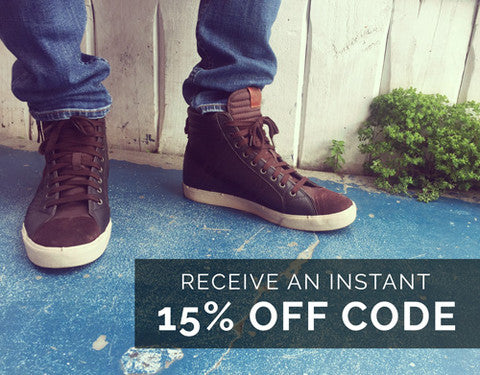Posted on

We’re all familiar with the gender stereotypes – women buy shoes based on fashion while men are driven by a comfortable fit. While there can be no question fashion is a major factor in women’s shoe sales, you might be surprised to learn that in a UK study of more than 2000 adults, more than a third of men were found to be walking around in ill-fitting shoes. In most cases, it has little to do with a preference for fashion and more to do with an inability to select the right size at the point of sale.
The price you pay for wearing shoes that don’t fit can be severe and long lasting. Often a poor shoe-fit will exacerbate existing foot pain and, in many cases, is the primary cause of it. Fortunately, this can all be avoided by following a few simple steps in finding the right shoe size for your feet.
1. Always be measured each time you buy new shoes – Perhaps the biggest misconception about the human foot is that it stops growing when we reach our maximum height. The fact is, our feet will continually change in size through our entire lifespan. So if the last time you measured your feet was when your parents had to drive you to the shoe store, there’s an excellent chance you’re mistaken about your current shoe size. To ensure the best possible fit, it’s recommended you measure your feet at the end of the day when your feet are largest.
2. Always measure to the larger foot – Another common foot folly is that our feet are perfectly symmetrical. In actual fact, it would be a rarity to find two feet on the same person exactly the same size. The degree to which they differ varies from person to person from marginal to as much as half a shoe size. The reason for the difference in size could be from right/left dominance, injury affecting growth, or the psoas muscle which can tighten and condense the bone structure in one foot. Be sure to measure both and fit to the largest. Adjustments can be made to make the smaller foot fit better in the shoe.
3. Try on the shoes and walk around the house before taking them outside – This is less about “breaking in” the shoes and more about identifying any potential fit problems that might have slipped by initially. If, for example, there are pressure points on the seams, this will lead to blisters and serious discomfort if worn for a full day outside the house.
 4. Toes shouldn’t touch the tip of the shoe – The rule of thumb is there should be 3/8” to 1/2” of space between your longest toe and the end of the shoe. In this case, ‘rule of thumb’ can be taken literally. This equals the approximate width of an adult human thumb. For a quick test, slide your foot to the front of the shoe and try to slip your thumb between your heel and the back of the shoe. If this is too difficult, the shoe is too small; if it’s too easy, the shoe is too big.
4. Toes shouldn’t touch the tip of the shoe – The rule of thumb is there should be 3/8” to 1/2” of space between your longest toe and the end of the shoe. In this case, ‘rule of thumb’ can be taken literally. This equals the approximate width of an adult human thumb. For a quick test, slide your foot to the front of the shoe and try to slip your thumb between your heel and the back of the shoe. If this is too difficult, the shoe is too small; if it’s too easy, the shoe is too big.
5. Shoes don’t always stretch, so don’t expect that they will – Too many shoe buyers make the mistake of assuming tight fitting shoes will stretch to a comfort level once the shoes are broken in. If they aren’t comfortable walking around the store, they won’t become so later.
6. Pay attention to the soles of the shoe – While it’s the outer body of the shoe that will draw all the compliments, it’s the sole that will have a significant say in fit and comfort. The sole suffers the wear and tear, not to mention the full body weight. Be sure your foot does not feel pinched or cramped when pressed against the sole of the shoe.
By following these simple steps, you’ll notice a huge difference in comfort and fit and your feet will thank you for it. When shopping online, use our online sizing chart to serve as a guide to find out your respective US, Euro, and UK shoe sizes

